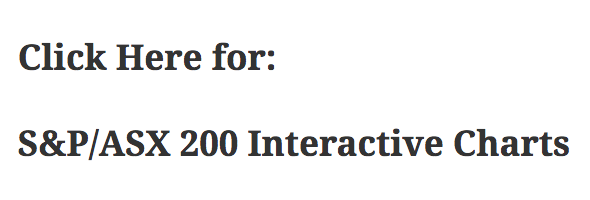The primary tool Australian technical analysts use to benchmark the performance of the Australian Securities Exchange (ASX) is a chart of the S&P/ASX 200 Index.
As it contains the top 200 stocks by market capitalisation on the ASX (or about 72% of the capitalisation), many consider it the “heart-beat” of the Australian economy.
NOTE:
Charts no longer display due to Yahoo changing their format.
Why do people use charts?
Chartists use a graph of the ASX 200 to establish a “feel” for the Australian economy and base their share transaction decisions accordingly.
Well-known stock market authors like Daryl Guppy and Alan Hull use a “filter” on the index to determine whether the current stock market climate is suitable for investing.
By using a filter on the ASX 200 index, a chartist can avoid purchasing shares during a bear market or major market corrections.
Conversely, when the market is trending up they can move to being fully invested.
Why is there a 200 day moving average (green line) overlaid on the charts?
The 200 day Exponential Moving Average (EMA) is the industry standard for determining the long-term trend of the index. That’s what the stockbrokers tend to use. Read more about moving averages.
Why is the Relative Strength Index (RSI) overlaid on the charts?
The Relative Strength Index (RSI) is used to determine the overbought and oversold levels of a stock or index. A 14 day RSI is the most common calculation. Read more about the RSI.
Other common oscillators include the Stochastic Oscillator and the MACD.
Common and logical ASX 200 chart filters:
Stan Weinstein – Only purchase shares when the index is above a rising 30 day weighted moving average (WMA). See an example used on the ASX.
Guppy Traders – Use a Count Back line on the ASX 200 graph to establish when the market is in decline and avoid investing during that time.
MarketIndex.com.au – Use two exponential moving averages (EMA) on the ASX 200. See an example here or visit their ASX 200 page for interactive charts and a summary of the index performance over different timeframes.
Alan Hull – In his Active Investing course notes, Alan only purchases shares when the 9 day simple moving average is above the 21 day simple moving average on the XJO.
Summary: The ASX 200 is an excellent barometer of the Australian Stock Market. By using just a simple filter, you can avoid investing during high-risk conditions or potential portfolio-cracking Bear Markets.
You can contact me on: admin@asx200chart.com.au
